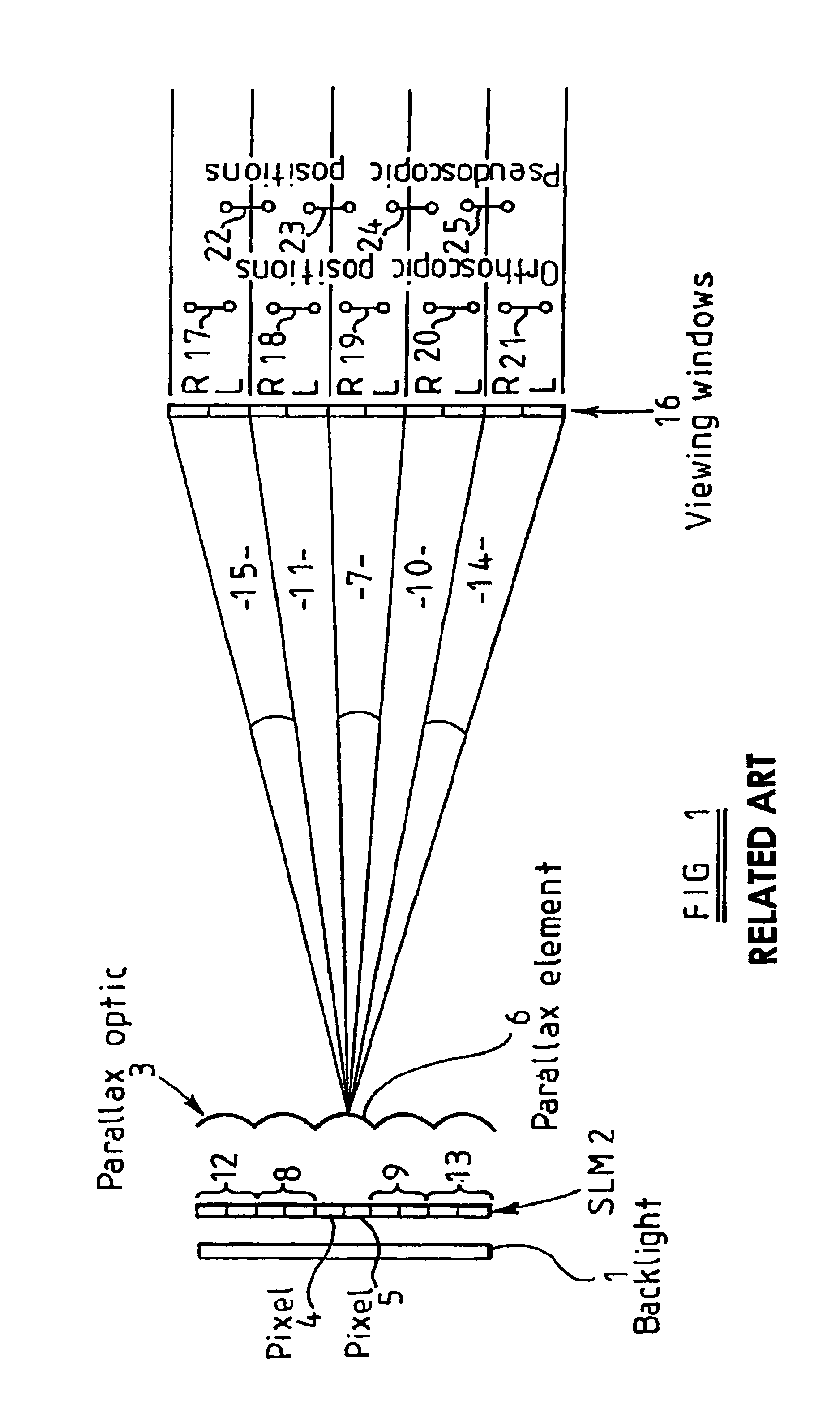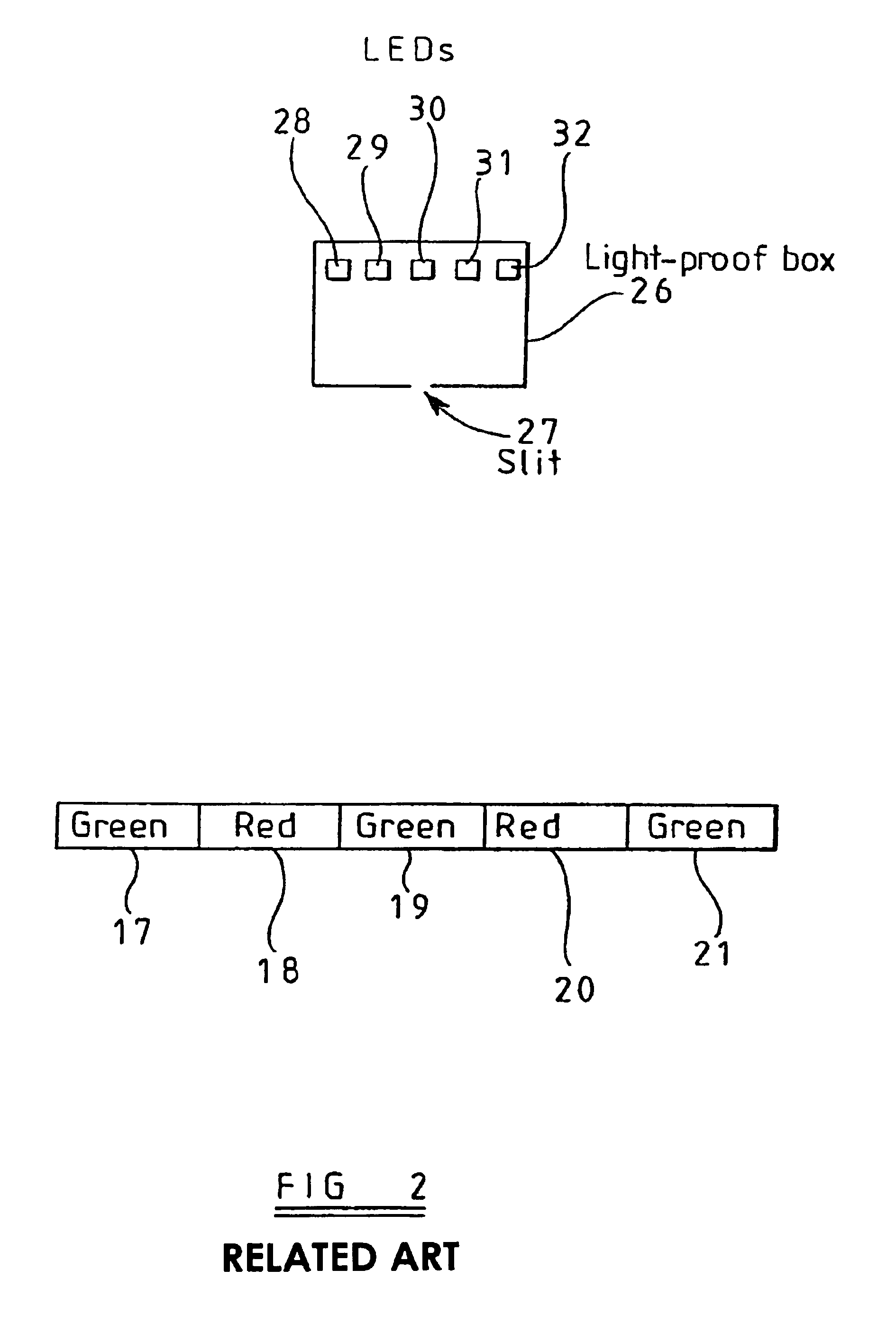Autostereoscopic display
a display and autostereoscopic technology, applied in the field of autostereoscopic display, can solve the problems of headaches and other symptoms of visual strain, non-ideal view position, and difficulty in aligning a moveable element, so as to reduce the tolerancing requirements, reduce or avoid difficulties, and maximise the suppression of light from the barrier region in the visible spectrum
- Summary
- Abstract
- Description
- Claims
- Application Information
AI Technical Summary
Benefits of technology
Problems solved by technology
Method used
Image
Examples
Embodiment Construction
[0050]FIG. 5 illustrates the VPI part of an autostereoscopic display which differs from that shown in FIGS. 3 and 4 in that the pitch of the parallax elements 32 of the upper portion 3a of the parallax optic 3 is equal to one and a half times the pitch of the parallax elements 6 of the part of the parallax optic 3 which forms the viewing zones shown in FIG. 3. This contrasts with the pitch of the elements 32 in FIG. 4, which is twice that of the pitch of the elements 6 in FIG. 3.
[0051]This is illustrated diagrammatically in FIG. 6 for a parallax optic in the form of a parallax barrier. The lateral positions of barrier slits 32 and pixels of the SLM 2 are illustrated at (a) for the image displaying and generating portion of the display, at (b) for the VPI shown in FIG. 4, and at (c) for the VPI shown in FIG. 5. In (b) and (c), those red pixels which cooperate with the slits of the VPI portion of the barrier to provide the usual indication to the observer are shaded. Thus, in FIG. 6(c...
PUM
 Login to View More
Login to View More Abstract
Description
Claims
Application Information
 Login to View More
Login to View More - R&D
- Intellectual Property
- Life Sciences
- Materials
- Tech Scout
- Unparalleled Data Quality
- Higher Quality Content
- 60% Fewer Hallucinations
Browse by: Latest US Patents, China's latest patents, Technical Efficacy Thesaurus, Application Domain, Technology Topic, Popular Technical Reports.
© 2025 PatSnap. All rights reserved.Legal|Privacy policy|Modern Slavery Act Transparency Statement|Sitemap|About US| Contact US: help@patsnap.com



